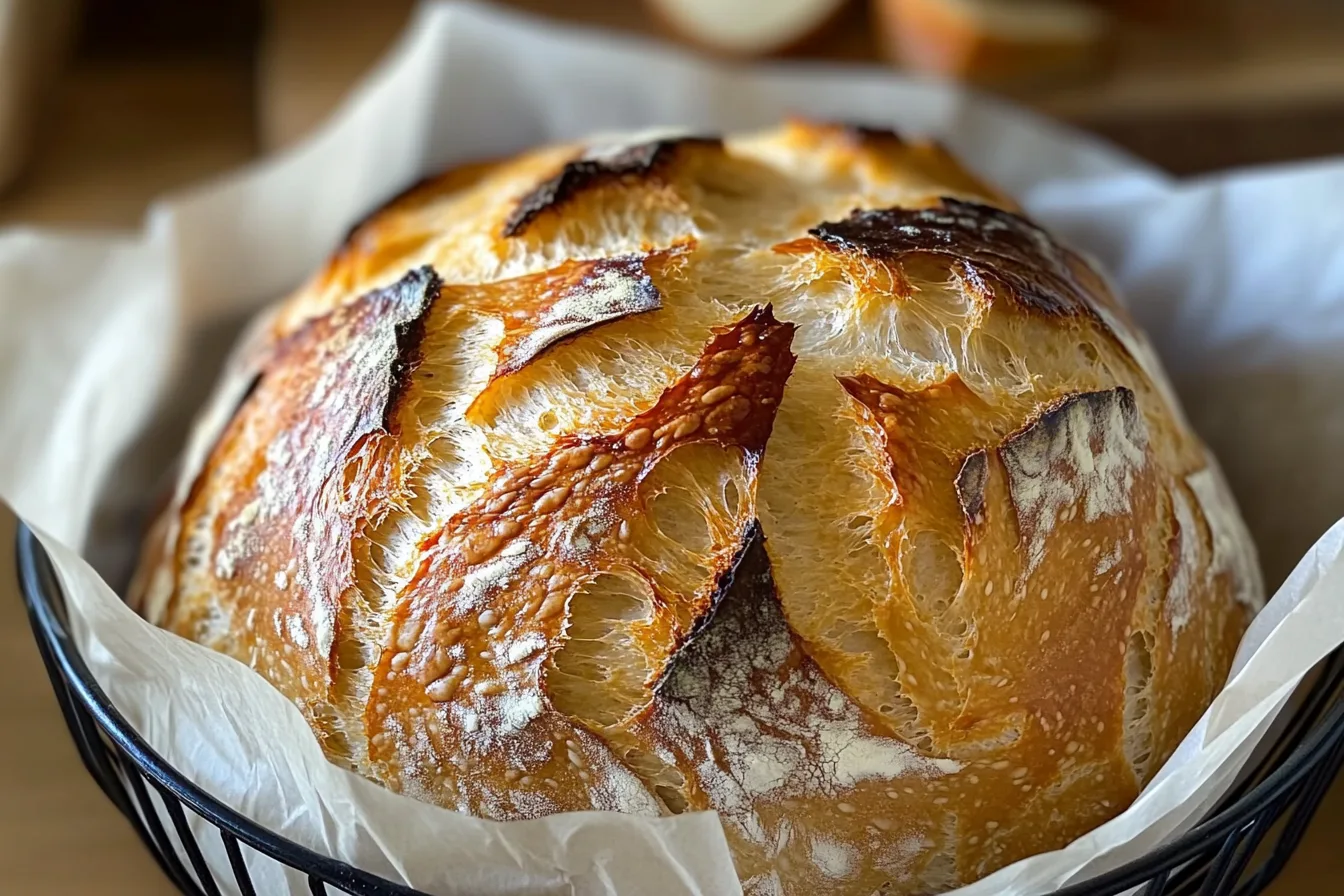Sometimes you need fresh, homemade bread in a pinch. Whether you forgot to pick up a loaf from the store or just want something warm and fresh, this quick bread recipe is the solution. Ready in just 20 minutes from start to finish, this recipe delivers a fluffy, golden-brown loaf without the wait or complicated steps.
Why Quick Bread Recipes Are Essential
Time is precious, and traditional bread-making can be time-consuming with its rising and proofing requirements. Quick bread recipes, which use baking powder as a leavening agent instead of yeast, are perfect for:
- Busy individuals: Perfect when you need fresh bread on demand.
- Last-minute meals: Great for pairing with soups or making quick sandwiches.
- Budget-conscious cooking: Homemade bread is more affordable than store-bought.
- Customizing to taste: Easily add herbs, spices, or other mix-ins to suit your preference.
Ingredients and Their Roles Explained
Understanding each ingredient ensures the best outcome every time.
All-Purpose Flour
This is the foundation of the bread, providing structure. While you can substitute with other flours, all-purpose gives the fluffiest texture.
Baking Powder
Acts as the leavening agent, helping the dough rise quickly. Fresh baking powder is essential for the best lift.
Salt and Sugar
Salt balances the flavor, while a touch of sugar enhances taste and aids in browning.
Milk
Adds moisture and richness to the bread. Dairy milk works best, but plant-based alternatives can be used.
Olive Oil or Melted Butter
Both add tenderness and flavor. Olive oil brings a subtle fruitiness, while butter offers a richer taste.
Step-by-Step Preparation Guide
Preheating the Oven and Preparing the Pan
Preheat your oven to 425°F (220°C). Let the oven fully preheat for at least 10 minutes to ensure even baking. Use an oven thermometer if needed to confirm the correct temperature. Grease a baking pan thoroughly using butter, olive oil, or non-stick spray to prevent sticking. You can also line the pan with parchment paper for easier cleanup.
Mixing Dry Ingredients
In a large mixing bowl, combine 2 cups of all-purpose flour, 1 tablespoon of baking powder, 1/2 teaspoon of salt, and 1 tablespoon of sugar. Sift the dry ingredients to break up clumps and ensure even distribution, which helps the bread rise evenly. Use a whisk or fork to blend thoroughly, making sure there are no pockets of baking powder left unincorporated.
Incorporating Wet Ingredients
Pour in 3/4 cup of milk slowly into the dry ingredients. Follow with 1/4 cup of olive oil or melted butter. Stir gently with a spatula or wooden spoon until just combined. The batter should be slightly lumpy; overmixing can lead to a dense loaf. If you want a lighter texture, let the batter rest for 2-3 minutes before transferring it to the pan.
Shaping and Transferring Dough
Transfer the dough to the prepared pan. Use a spatula to spread it evenly, smoothing the top gently without pressing too hard. For a decorative touch, you can score the top lightly with a knife or sprinkle some coarse salt, sesame seeds, or herbs before baking.
Baking Tips
Place the pan on the middle rack of the oven to ensure even heat circulation. Bake for 12-15 minutes, keeping an eye on the bread after the 10-minute mark. If the top is browning too quickly, loosely cover it with aluminum foil. For convection ovens, you may need to reduce the baking time slightly.
Testing for Doneness
Check doneness by inserting a toothpick into the center; it should come out clean or with just a few crumbs. Alternatively, gently tap the top of the bread—it should sound hollow when fully baked. If it doesn’t, bake for an additional 2-3 minutes and test again. Let the bread rest in the pan for 5 minutes before transferring to a wire rack to cool slightly before slicing.—
Serving Suggestions
Quick bread is versatile and pairs beautifully with various dishes.
Pairing with Soups and Stews
Enjoy with hearty stews, creamy soups, or a warm bowl of chili.
Using for Sandwiches
Slice and fill with deli meats, cheeses, or fresh veggies for a quick lunch.
Sweet and Savory Toppings
Top with butter, jam, honey, or spreadable cheeses for a delightful treat.
Variations and Customizations
Change things up with these easy tweaks:
Adding Herbs and Spices
Stir in a teaspoon of garlic powder, rosemary, or oregano for a savory twist.
Incorporating Cheese or Seeds
Fold in shredded cheddar or sprinkle sesame seeds on top before baking.
Making It Sweet
Add a handful of chocolate chips or a teaspoon of cinnamon and extra sugar for a dessert version.
Tips for Best Results
- Fresh ingredients: Use fresh baking powder to ensure proper rise.
- Avoid overmixing: Stir until ingredients just come together.
- Oven accuracy: Use an oven thermometer if unsure of your oven’s accuracy.
- Storage: Store leftovers in an airtight container for up to 3 days.
Common Mistakes and How to Avoid Them
- Overmixing: Results in dense bread. Mix just until combined.
- Skipping oven preheat: Leads to uneven baking.
- Using expired ingredients: Always check the date on your baking powder.
- Underbaking: Ensure the toothpick test is clean to avoid doughy centers.
Frequently Asked Questions
Can I use whole wheat flour instead?
Yes, but it will be denser. Use half whole wheat and half all-purpose for balance.
How can I make this dairy-free?
Use plant-based milk and olive oil instead of butter.
Can I freeze the baked bread?
Yes, wrap tightly and freeze for up to a month.
How can I make the bread fluffier?
Ensure your baking powder is fresh and avoid overmixing.
What can I use instead of olive oil?
Melted butter, vegetable oil, or coconut oil work well.
Making fresh bread doesn’t have to be a long process. With just a handful of ingredients and 20 minutes, you can enjoy warm, fluffy bread any day of the week. This recipe is perfect for busy days, last-minute meals, or whenever you crave homemade goodness.

